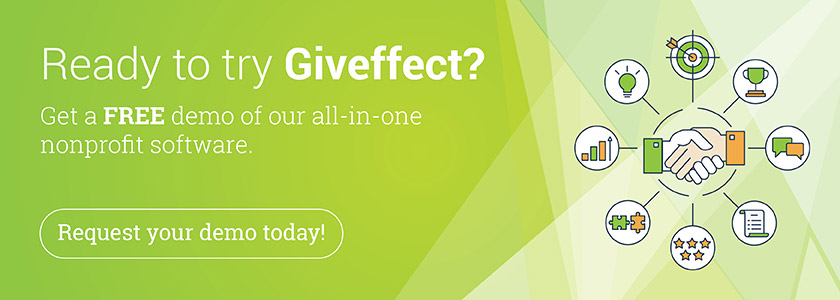The Pandemic
The pandemic hit every business and nonprofit. It was particularly difficult for nonprofits that relied on massive amounts of volunteer work and business-sector support, like Habitat for Humanity volunteers.
How to overcome such a unique challenge? It might not be a pandemic next time, but maybe a sector or local issue. One particular example of rising above using everything at their disposal is the York Habitat for Humanity in York, PA.
Kasey Lofties, the Volunteer Services Manager with the York Habitat for Humanity, shares just some of the challenges that they were facing during this unprecedented period:
“During Covid-19 we had about an 85 percent decrease in volunteer efforts in covid, but we had to still schedule out real projects that were on the books. We still have to coordinate our build schedule, which was put behind. And it’s not just the professional labor but the volunteer labor that’s impacted. It’s a unique challenge to have to coordinate all these aspects.”
Since building homes can be extremely technical, and Habitat for Humanity works with professionals through the construction, this also means that the work has to be scheduled around their availability; it’s a thick layer of added complexity.
The pandemic didn’t just impact the physical builds; it impacted fundraising, too.
“We usually do an annual fundraiser that our city coordinates. We took a step back last year to allow the pandemic responders to have the spotlight,” Lofties said. “But that also makes an impact on our bottom line, and we have to budget around that unexpected change in income.”
The pandemic adds new competition for donations, even though completely understandable, does impact the bottom line for existing nonprofits.
York Habitat for Humanity also has a ReStore, which is a retail location where they sell excess building materials, gently used donated home goods, and more. And the pandemic also had a negative impact on donations and retail operations as well.
Getting Back to Work
Even though the pandemic impacted virtually every aspect of York Habitat for Humanity’s mission, the job must go on and as some of the impacts start to fade. It’s time to find a way to get back to full strength helping the community.
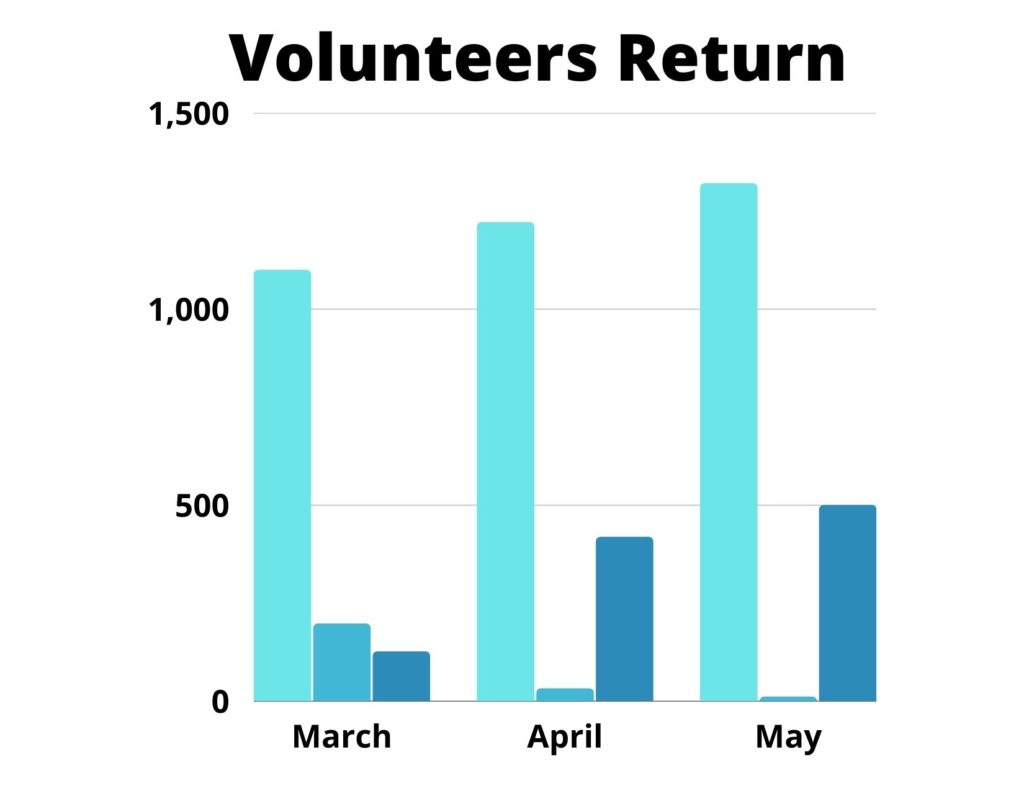
One way is to work with the community again and explain to them that the job isn’t done yet, according to Lofties:
“The entire pandemic also offers another way we can continue to re-engage these volunteers. We have families that have completed the program, but we don’t have a house to put them in. We can tell volunteers that even though we had delays, the family that you have been working with doesn’t have a home. And we need to come back and finish the job and continue building.”
And, according to Lofties, that’s been effective. She currently uses Giveffect to manage the communications between all the groups she needs to communicate with, from professional builders, to volunteers, to staff and others. And she can use the CRM to coordinate which groups she wants to communicate with exactly and how:
“I really like the email campaign system probably the most. It has a massive amount of flexibility working with the CRM. For example, we needed a mason right now on our construction site, and I can go into the system and easily find any volunteer who said they have experience in masonry and then send only that group and email. And I like the analytical part of it. For example, I sent an initial email, and I can see who opened it. And then I can send a follow-up email to those that didn’t open it, or maybe didn’t see it the first time. And it’s easy to use and set up.”
The Giveffect Difference
The Email System: You can build your own emails, using user-friendly, drag-and-drop templates and send them to any group in your nonprofit. All the way from volunteers, to “only masons”, for example.
You can create any group and sort by that group to customize YOUR email experience.
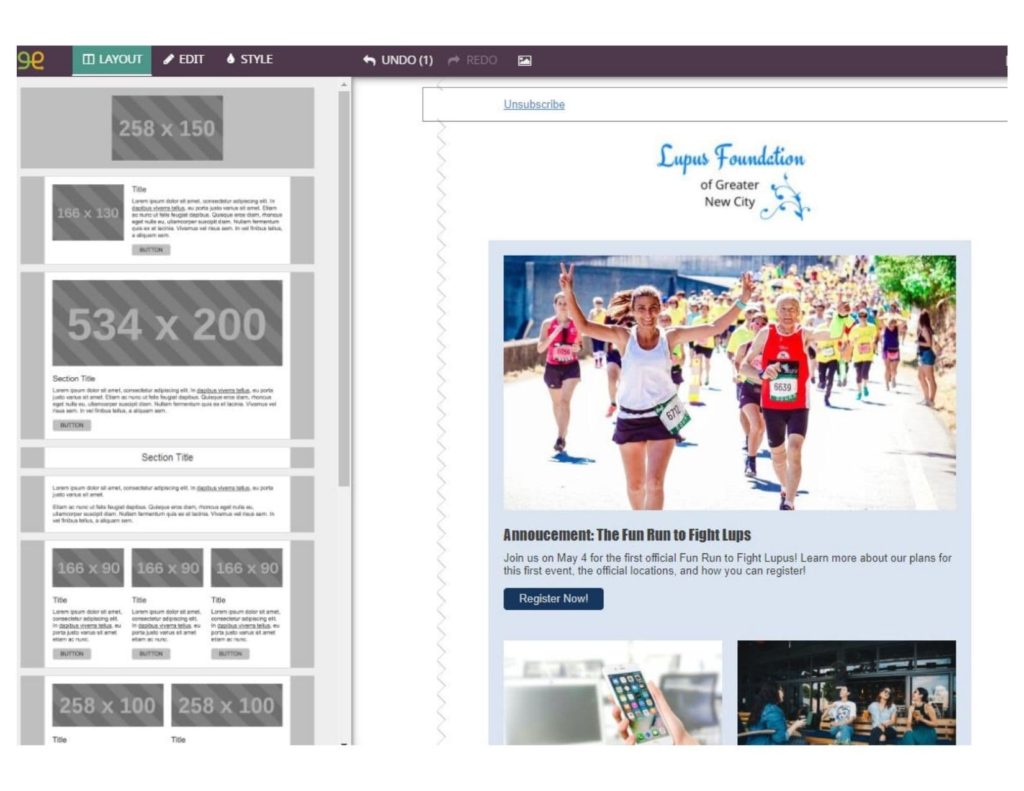
Volunteer Support
It’s just not coordinating communications though, as she needs a central hub to process the volunteers. Ideally, it would be flexible and user-friendly enough to allow the volunteers to access the system and sign up electronically. Yet detailed and responsive enough to file the back-end reports that are needed for records and documentation.
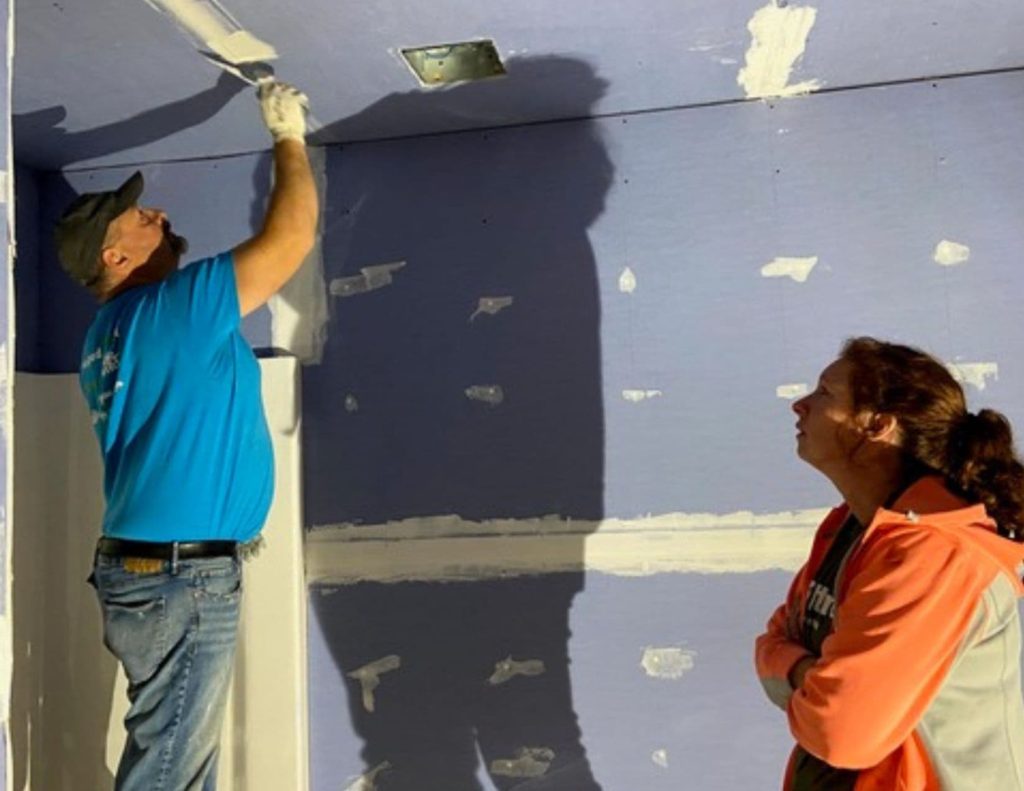
Giveffect makes this easy in the Volunteer Management System which gives each volunteer an account and access to an easy-to-use and maintain website where you can view all the volunteer opportunities available and sign up for which one fits your schedule. According to Lofties, the system works great for everyone involved:
“People are busy and moving around all the time, schedules change and life happens. So to have a system that lays out all the hours and dates, it inclines volunteers to be more active and volunteer more, as they can set their own pace and time that works for them. Most of the time I can direct everyone to go through the system, but we can also manually input data in some limited unique circumstances.”
But it’s just not about scheduling. Habitat for Humanity features a key core component called “Sweat Equity”. And that simply means that those who are receiving a home (Partner Families) have to complete a certain amount of volunteer volunteer hours toward their build. This creates a buy-in on the system and an appreciation for the Habitat for Humanity process. It also provides vital volunteers for the construction of other housing. There is a total limit per person, but also a total amount per family. And volunteers can also donate their hours as well to the family total.
Giveffect created a special feature just to calculate and monitor the Sweat Equity system. Lofties said:
“In the Giveffect system, there is functionality to allow people to volunteer their hours and to keep track of everyone’s Sweat Equity hours. And it all keeps track of it inside the system. And we can file easy reports to ensure that everyone is completing the necessary hours and that everyone is on track. It makes the entire process simple”
The Giveffect Difference
Volunteer Signup: Prospective volunteers can see the entire volunteer schedule online, at any time. They can select different opportunities, see more details and information, and signup for times that fit inside their schedule, all on their own.
This is a very user-friendly system that allowed Lofties to spend more time out in the community and less time manually registering volunteers.
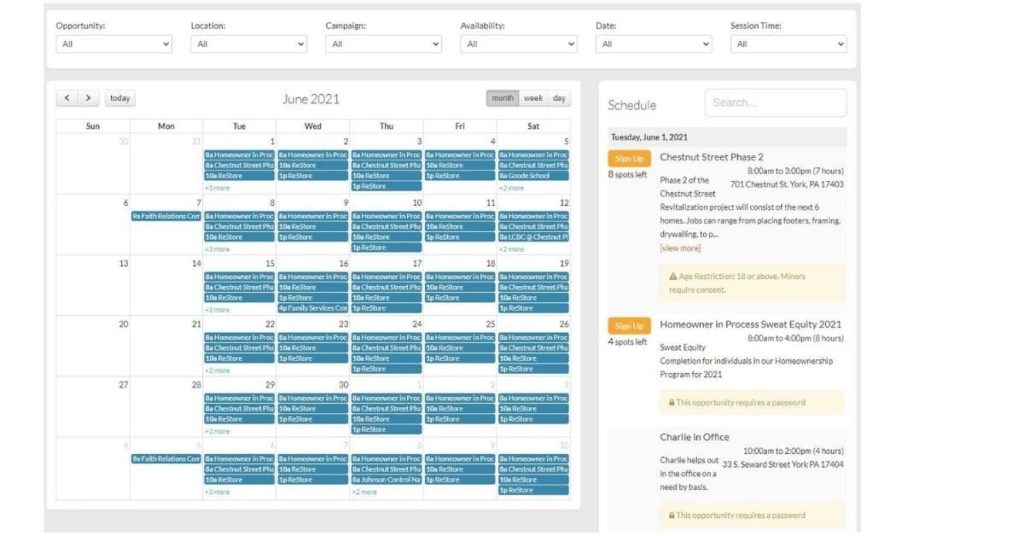
Looking Ahead
Even as things start to return to normal, there’s still a large backlog of work to catch up on. And the need for housing isn’t decreasing anytime soon. In fact, things might get busier than ever as housing prices show no signs of slowing down.
But York Habitat for Humanity is excited about the future and they’re looking to expand their functionality further with Giveffect. Events are starting back up and they’re excited about the promotion capabilities and different event functions, including check-in from your phone using the Giveffect App. But that’s not all, according to Lofties:
“We are soon going to develop the process and create funnels for those in our community. We want to create a map where we can work with our volunteers, and nurture them into fundraisers and donors. And work with our donors and get them more involved as volunteers and fundraisers, for example. And Giveffect allows that functionality to build out automatic funnels for email replies, rules, and scheduling.”
And Lofties sees an exciting future between Giveffect and York Habitat for Humanity.
“Overall, coming up through the organization, I have looked at other systems, but no other system does what Giveffect does. Nothing that keeps everything in one space. Nothing that can allow me to do all the reports in one system.”
The Giveffect Difference
The CRM: This flexibility allows Lofties to talk to exactly who she wants to talk to, and find exactly what she needs when she needs it. From the whole group, down to small subgroups like only those with masonry expertise. It includes all donors, volunteers, event attendees, members, store customers, grants, major gift donors, and more. And offers a massive customizable variety of ways to sort them, including by groups, skills, jobs, shifts, certifications, reservations, and more.
You can create any group and sort by that group to customize YOUR experience.
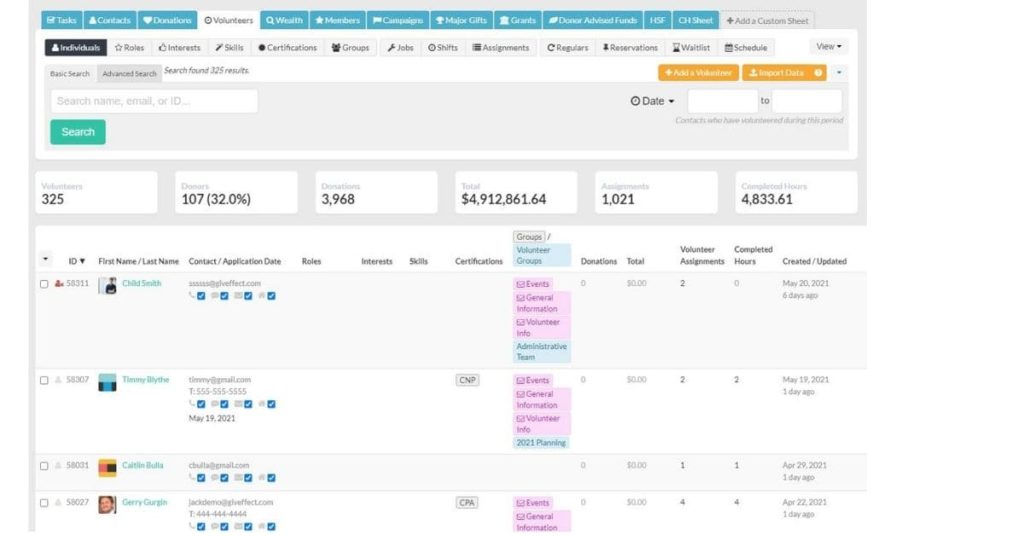
Reporting: The ease and customizability of the CRM allows for that same flexibility in building reports. The CRM can build reports that cross-reference any aspect of the system vs. any other. You can run a report that references volunteer donations, or how many of your major gift donors are also fundraisers, and you can learn how effective they are. Or you can run reports on smaller groups inside main groups, and learn more about the context of those.
“Reporting is a lot easier in Giveffect. Monthly and sometimes bi-weekly I do reports on hours and donations, and instead of having to manually go through and I only click a few buttons for a full report,” Lofties said about the process.
“Overall, coming up through the organization, I have looked at other systems, but no other system does what Giveffect does. Nothing that keeps everything in one space. Nothing that can allow me to do all the reports in one system.”
Kasey Lofties, Volunteer Services Manager
York Habitat for Humanity
More on York Habitat for Humanity
York Habitat for Humanity is a volunteer-driven, Christian housing ministry that builds safe, decent, and affordable homes in partnership with lower-income York County residents living in substandard housing. Funded mainly by private donations, York Habitat provides a “hand up, not a hand out” by offering qualified families interest-free, 30-year mortgages. With the completion of York Habitat’s 136th home in 2019, over 600 men, women, and children live in Habitat Homes in York County! Since 1985, York Habitat has created over $7.8 million worth of new or rehabilitated affordable housing, which generates more than $383,000 in tax revenue. Over 8,950 volunteers work with York Habitat annually.
